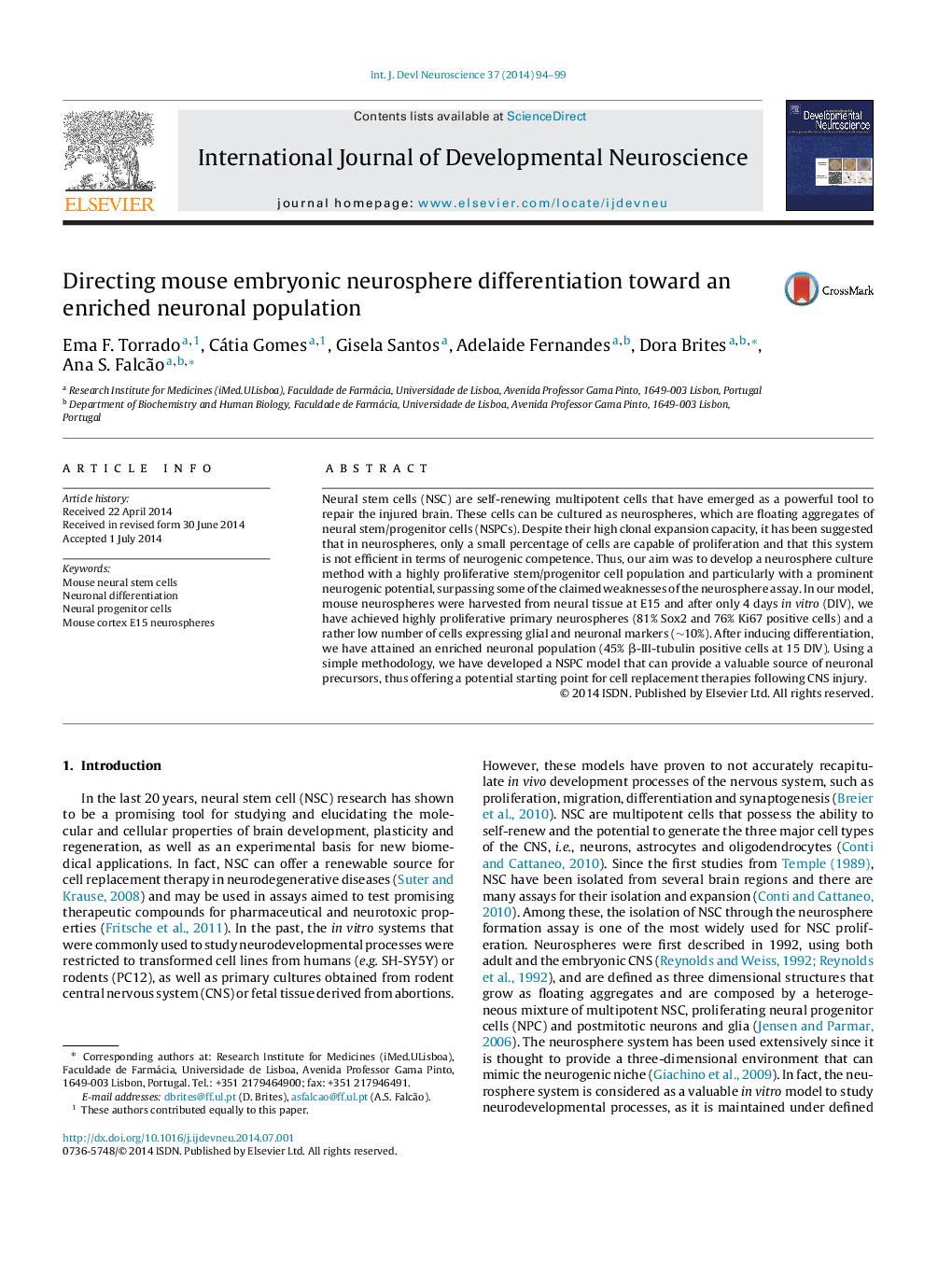| کد مقاله | کد نشریه | سال انتشار | مقاله انگلیسی | نسخه تمام متن |
|---|---|---|---|---|
| 5893904 | 1568394 | 2014 | 6 صفحه PDF | دانلود رایگان |
- We develop a mouse neurosphere culture method with highly proliferative cells.
- We direct neurosphere differentiation toward an enriched neuronal population.
- This model provides a potential starting point for cell replacement therapies.
Neural stem cells (NSC) are self-renewing multipotent cells that have emerged as a powerful tool to repair the injured brain. These cells can be cultured as neurospheres, which are floating aggregates of neural stem/progenitor cells (NSPCs). Despite their high clonal expansion capacity, it has been suggested that in neurospheres, only a small percentage of cells are capable of proliferation and that this system is not efficient in terms of neurogenic competence. Thus, our aim was to develop a neurosphere culture method with a highly proliferative stem/progenitor cell population and particularly with a prominent neurogenic potential, surpassing some of the claimed weaknesses of the neurosphere assay. In our model, mouse neurospheres were harvested from neural tissue at E15 and after only 4 days in vitro (DIV), we have achieved highly proliferative primary neurospheres (81% Sox2 and 76% Ki67 positive cells) and a rather low number of cells expressing glial and neuronal markers (â¼10%). After inducing differentiation, we have attained an enriched neuronal population (45% β-III-tubulin positive cells at 15 DIV). Using a simple methodology, we have developed a NSPC model that can provide a valuable source of neuronal precursors, thus offering a potential starting point for cell replacement therapies following CNS injury.
Journal: International Journal of Developmental Neuroscience - Volume 37, October 2014, Pages 94-99
